George Augustus Absolom
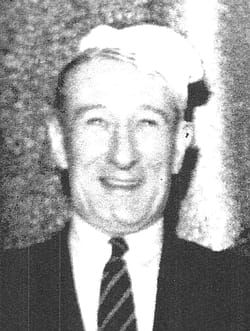
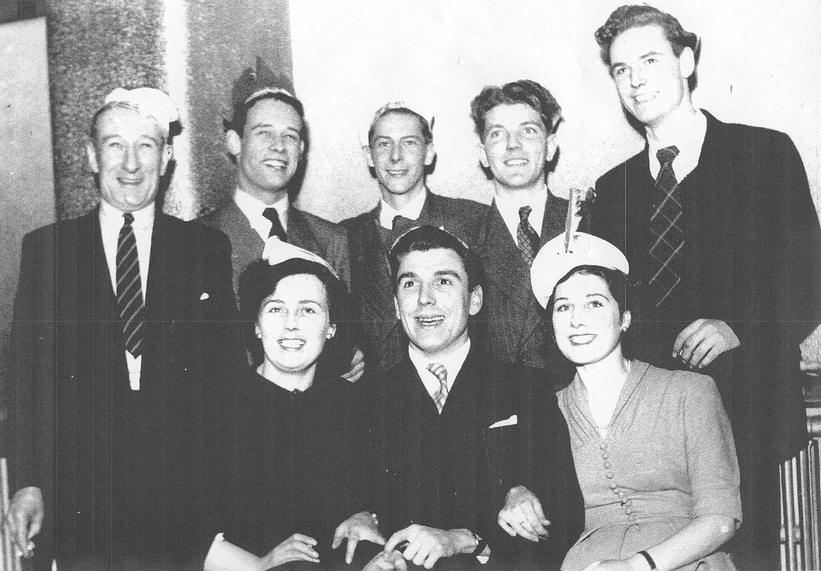
George Augustus Absolom was born on May 22nd 1900, the son of oil and colourman Frederick William Absolom. Frederick would have sold oils, including lamp oils, paints, brushes, cleaning materials, and pigments for mixing household paints, probably in a hardware shop. George went to school at Holy Trinity School, Lewisham. At the age of ten George was a paperboy, but by 16 he was working as a shop assistant. He enlisted in the Navy on January 11th 1916. He was 5 feet 3 inches tall, with brown hair, grey eyes and a fair complexion.
George trained on Vivid I, Ganges, and Pembroke I, then served from November 1916 on Repulse and Princess Royal during the First World War. He did not experience any combat, although the Princess Royal provided distant support during the Second Battle of Heligoland Bight in 1917, before engaging in uneventful patrols of the North Sea.
On 22nd May 1918 George turned 18 and was taken on for an engagement of 12 years. His final ship was the Calliope from July 1918 to March 1919, and again George was not involved in any combat.
George was eventually invalided back to shore on Pembroke I in March 1919 due to defective vision. He left the service on July 9th 1919. A note on his service record states that he committed theft from a Post Office (date unknown) and could not, therefore, be recommended for work in a post office again.
George married his first wife Lydia Emily V Sweeney in 1925. They had a son, Robert, on 24th February 1927. Sadly only a year later 28 year old Lydia died in a tragic accident when, at home alone with Robert, she fell down the stairs.
Robert was sent to live in Cheam, Surrey, with his maternal grandmother. At this time George was a Sound Engineer with Western Electrics. He met his second wife Margaret Chisholm (known as Peggy), a 19 year old hotel receptionist in Galashiels, Scotland. George went to Johannesburg in South Africa on 28 Mar 1930, and it appears that Peggy followed him out there. George was involved in converting the cinemas there from picture only to “talkies”. George and Peggy had a daughter, Joan Selby, on 5th Jan 1931.
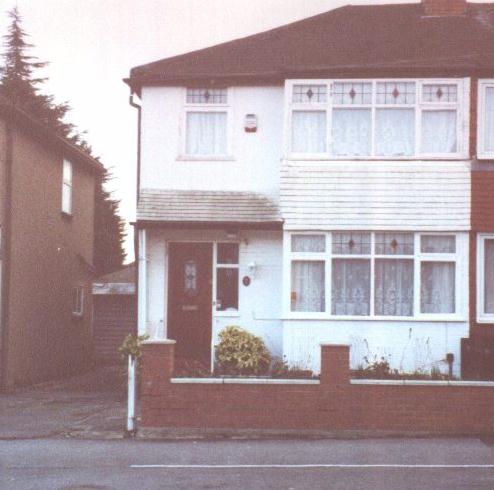
On their return to England on 4th Dec 1931, George and Peggy bought 52 Lansbury Drive, Hayes, at a cost of around £500. It was a brand new three bedroom end of terrace house on the left end of a block of four on the Grange Park Estate, built by Taylor Woodrow in 1932. This address is quoted on the patent application George made in the May of this year.
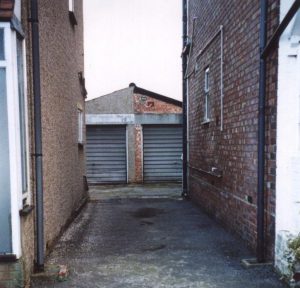
The house has a shared driveway beside it leading to a semi-detached garage. Number 54, the house to the left of this driveway was owned by George’s sister Edith (known as Eddie) and her husband, Reginald Juster (known as Reg).
In those days, before the era of trading estates, it was not unusual for businesses to operate in garages and small buildings within residential areas. The two garages between the houses were converted into a workshop and employed about 5 or 6 men. There was another building attached to the garages as an additional workspace.
The present owner can still detect some signs of light industrial use. There is some blackening of the rafters in the garage, the vestiges of a doorway between the two garages, and a second telephone line terminates at the rear of the house as if it once led to the garages.
On May 2nd 1932 George submitted an application for a patent on his invention, the Teesmade.
George’s son Robert returned to live with his father and stepmother in approximately 1934, when he was about seven years old. At this stage Absolom was chiefly engaged in producing automatic tea makers in the converted garages at the back of his house, but he was also involved in other projects.
In August 1934 he submitted an application to patent an ingenious device which used coloured lamps to indicate the approximate speed of moving vehicles for the benefit of other road users and pedestrians. Now wouldn’t that be a good way to clamp down on speeding today?
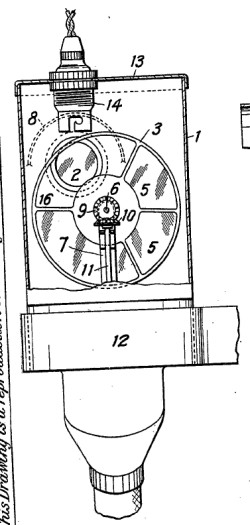
On leaving school at the age of 14, Robert joined his father in the business, where he continued to work until 1962, apart from 2 years National Service in the Royal Marines from 1945 to 1947.
Robert Absolom beleives that following the Teesmade Cabinet his father developed a model with a tapered frontage, both kettle and teapot being situated behind the clock. Then on August 21st 1935 Absolom, together with George Herbert Johnson of Hampton Works, Sheen Lane, Mortlake, SW14, applied for a patent for a new design, Patent Number 440941.
George’s second daughter, Heather, was born in 1936, but tragically, she died aged about four in a terrible housefire accident while she was on holiday with Peggy’s sister in Scotland.
During World War 2 production of tea makers ceased as there were no materials or capacity for domestic products. During this period George Absolom was involved with the production of Rheostats that controlled the lighting on tanks, and various other machine based work. After the War, George traded under the name Teesmade Engineering.
George and Peggy’s elder daughter, Joan, married Stanley Forrest, an engineer, and had a son, Stephen, who was born about 1952/3.
In 1952 next door neighbours George and Peggy Absolom and Reg and Eddie Juster decided to sell one of their houses and move into one house together. The buyers were to be the Monks, whose son Michael kindly provided much of my initial infomation on George Absolom. Originally the Monks were to buy number 52 (they were keen because George, in true innovative fashion, had turned the air-raid shelter into a swimming pool!) – but at some stage they changed their minds and sold Number 54 instead, for about £2,500. Number 52 was turned into 2 flats and Reg and Eddie moved into the first floor flat. The conservatory at the rear of 52 served as the office and the business in the garages continued.
Michael Monk, whose parents bought Number 54, writes, “As a child I grew up with George and his wife Margaret (Peggy) as colourful neighbours. My parents used to make a little extra money as outworkers, assembling the clocks in the evenings. The machinery included presses and paint spraying, and a machine on which the heating elements for the kettles were wound.
“I remember an occasion when George was throwing half-crowns into the air and any I caught I could keep – I think I made about 17/6d that evening which was not inconsiderable in 1953/4! I also recall Peggy coming round to get my father to collect George from the pub. In his later years he turned to drink for escape – I suspect a man whose potential for invention and enterprise was thwarted by events.”
George’s son Robert confirms that his father enjoyed socialising at the local pub but feels that it would be wrong to suggest that his father had a drinking problem.
Michael continues: “I’m sure I remember hearing my Father say that George felt very bitter that he had effectively been cheated out of his patent invention by Goblin who took his concept and made a few adjustments before patenting it themselves.” When I asked George’s son Robert what his father’s attitude was towards Goblin, his answer was unequivocal: “Father felt that he had been robbed.”
See also Teesmade Engineering and Teeboy Engineering.
